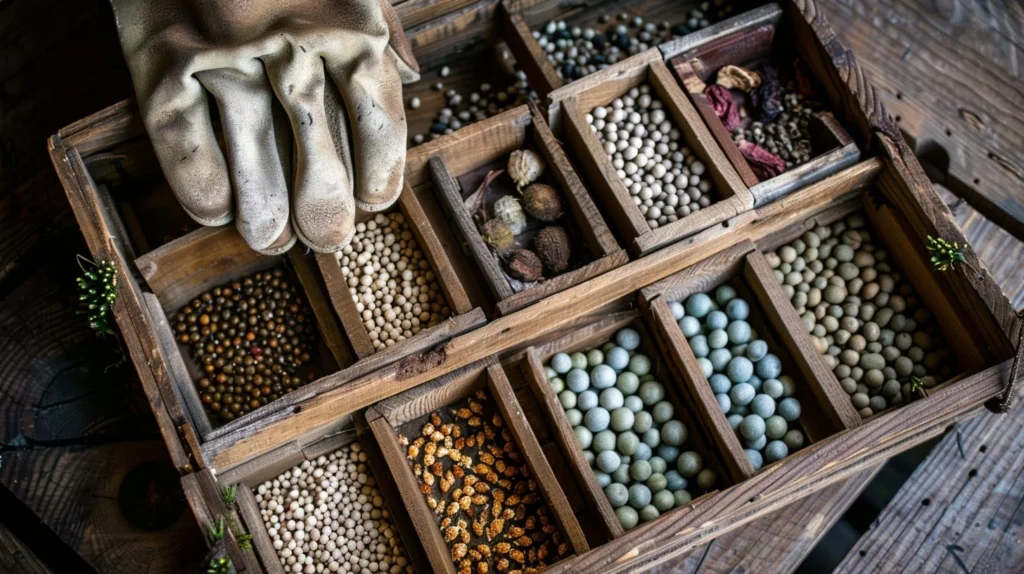Sustainability isn’t a new concept—it’s a way of life that many of our ancestors perfected long before it became a trend. Black, Indigenous, and other communities of color have historically practiced eco-friendly gardening methods rooted in conservation, resourcefulness, and deep respect for the land. By looking to these traditions, we can create gardens that are not only productive but also kind to the environment. Here are four ancestral gardening practices that can help you make your garden more sustainable today.
1. Companion Planting for Natural Pest Control

Long before synthetic pesticides existed, indigenous African and Indigenous American farmers used companion planting to protect crops and improve soil health. This technique involves growing plants together that benefit one another, such as pairing corn, beans, and squash—known as the Three Sisters method used by many Native American tribes. In West Africa, farmers often plant hot peppers next to leafy greens to deter pests naturally.
Similarly, marigolds can be planted alongside vegetables to keep harmful insects away. These time-tested practices reduce the need for chemical pesticides, keeping your garden healthy and your food free from toxins. Companion planting also improves biodiversity, attracting pollinators and beneficial insects that contribute to a thriving ecosystem. By incorporating this method, you can protect your garden without harming the environment.
2. Rainwater Harvesting for Water Conservation

In many African and Caribbean cultures, rainwater harvesting has been a crucial method for sustaining agriculture in dry climates. Rather than relying solely on municipal water, our ancestors collected and stored rainwater in barrels, underground cisterns, or large clay pots to irrigate crops during dry periods. This simple yet effective practice is still a game-changer for sustainable gardening today.
Setting up a rain barrel beneath your gutter system allows you to collect and reuse water, reducing your dependence on treated water and lowering your water bill. Additionally, using rainwater prevents chemical runoff from treated tap water, which can disrupt the delicate balance of soil nutrients. With climate change causing more unpredictable weather patterns, adopting rainwater harvesting can help ensure a steady water supply for your garden while preserving natural resources.
3. Composting to Enrich Soil Naturally

Before commercial fertilizers became widely available, Black and Indigenous farmers relied on composting organic materials to create nutrient-rich soil. Food scraps, leaves, and animal manure were transformed into natural fertilizer, ensuring soil remained fertile for generations. In the Gullah Geechee communities of the American South, for example, gardeners would compost seafood shells and vegetable scraps to add valuable minerals to the soil.
Composting reduces food waste, minimizes landfill contributions, and provides essential nutrients to your plants without the need for synthetic fertilizers. By creating your own compost pile or bin, you can recycle organic matter and improve soil health naturally. This practice not only supports sustainable gardening but also connects us to the traditions of our ancestors, who knew that healthy soil was the key to a productive harvest.
4. Saving Seeds for Future Generations

For centuries, African, Indigenous, and other ancestral communities practiced seed saving to preserve biodiversity and maintain food security. Instead of buying new seeds each season, families carefully selected and stored seeds from their healthiest crops to plant the following year. This method ensured that crops adapted to their local climate and soil conditions, making them more resilient over time.
In West African traditions, certain seeds—such as okra and cowpeas—were carried across generations, helping communities sustain their food sources even in times of displacement. Today, seed saving remains an essential practice for maintaining heirloom plant varieties and reducing reliance on commercial seed companies. By harvesting and storing seeds from your best-performing plants, you can create a self-sustaining garden that honors the wisdom of those who came before us.
